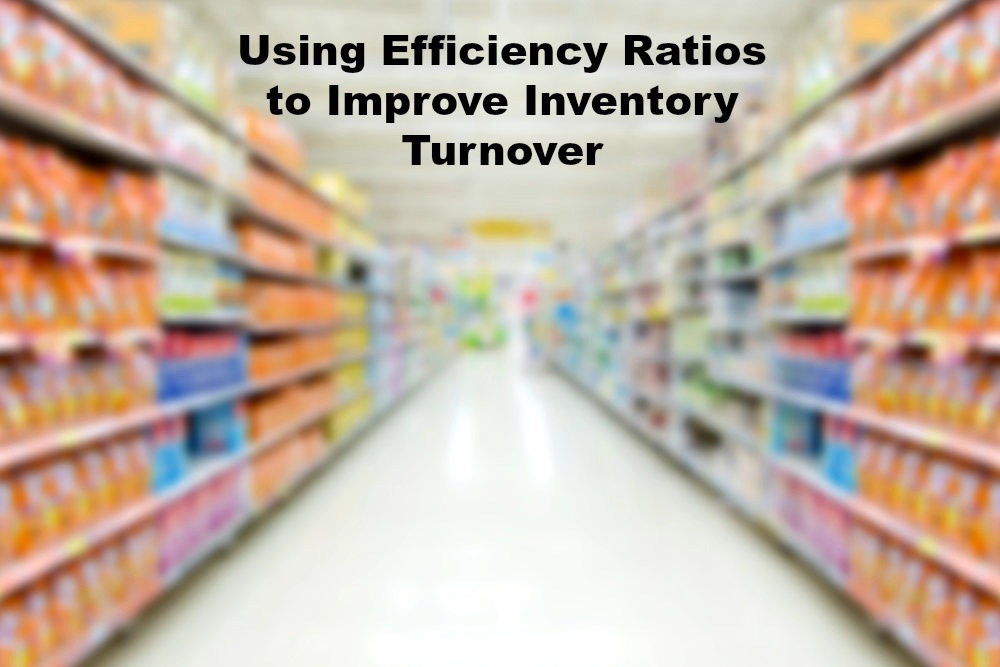Wasp Barcode Technologies: The Barcode Solution People
Using Efficiency Ratios to Improve Inventory Turnover

In 2015, Target took a
$5.4 billion writedown as it closed 124 stores in a failed bid to enter the Canadian market. This lead to a C-Level shuffle to try and get out of the slump. Even after the closure, Target is still
facing inventory issues at its US stores. At Walmart the news is no better, with increasing challenges because of
empty shelves leading to empty stores. Using efficiency ratios can help your business avoid big box inventory issues like big box stores, Wal-Mart and Target, are currently facing.
For both big box retailers, leaders in the industry, once praised for the efficiency, empty shelves and dissatisfied customers have caused big problems. While this means store closures and strategy adjustments for the big boys, the same challenges can be even more devastating to smaller companies and can even destroy a small retail business.
[Tweet "Getting inventory right is crucial to your company’s success."]
Getting inventory right is crucial to your company’s success. Too much inventory and you are wasting money on goods not sold and wasting money and resources on storage and movement. Don’t get enough inventory and you miss sales opportunities and have disappointed customers. It is a fine line to balance, getting just the right amount of inventory. Companies that do it well can go far. Those that don’t, won’t.
Empty Shelves Leads to Empty Stores
By taking a closer look at the problems facing major retail chains Target and Walmart, small and medium sized businesses can learn valuable lessons for their own operations.
Target
Target faced challenges balancing online and in store sales, leading to empty shelves which led to empty stores, and eventually massive closures and layoffs. As Target Executive John Mulligan
explained to MPR News, "We've been asking our supply chain to move well beyond its original design and become more flexible in the way we serve our guests. However, while we understand the reasons, the simple fact is that our current performance is unacceptable."
[su_divider top="no" size="2"]
[su_divider top="no" size="2"]
At the heart of the problem are getting forecasting and demand right, according to K.K. Sinha, the chair of the supply chain operations department at the University of Minnesota’s Carlson School of Management. "The devil is in the details," Sinha told MPR News. "You have to be able to forecast the demand and make sure all the systems are talking to one another and you have to work through the details. You have to sense and respond with respect to what's happening in every store in every different location."
Walmart
Similarly Walmart has been having trouble keeping stores adequately stocked, especially fresh produce.

Walmart US CEO Greg Foran, explained some of Walmart’s challenges to investors in April of 2015.
He told Fortune, “Our inventory quantity and flow can be better. We’ve got too much inventory in the back rooms and our processes are not where we want them to be. And that is causing some undue shrinkage (product that could have been sold but wasn’t) and some out-of-stocks.”
The source of Walmart’s problems? Foran says they’ve been “slow” to take advantage of data in selecting the best merchandise mix.
Foran explains, “We have lost some of our muscle in building a customer-relevant assortment.” The company plans to utilize more data in the future to avoid these pitfalls.
Manage Your Inventory, Don’t Let It Manage You
Understanding inventory flows and the efficiency of your operations is critical to business success. You need to be able to
track your inventory from supplier to consumer so that you can build up an accurate picture of how inventory moves through your business and along your supply chain.
Pen and paper or manual systems like Excel will never be able to
deliver the information you need in a way or time that you can use. They are slow to update, prone to human error, and simply can’t capture inventory movement the way more advanced inventory tracking systems can.
Using
barcode technology and barcode based inventory and asset tracking is one of the best ways to monitor your inventory and efficiency. These systems use barcode scanners to capture and enter data to a real-time updated database. This significantly decreases employee time spent entering data while at the same time eliminating the potential for human error. It also adds the information to a real-time updated database that can be accessible to multiple users, ensuring everyone in your business who needs this information has access to it.
Capturing data isn’t enough to have a full picture of your business and your inventory needs. The data needs to be put to work. For retailers there are a number of efficiency ratios that are important to understand so you can manage your inventory flow and forecast effectively.

Efficiency Ratios to Assess Deficiencies
Once you have an effective inventory management system in place and are tracking data, you need to be able to put it to use. That is where a set of efficiency ratios, or measurements, can help you better understand your business and identify weaknesses and opportunities. Here are some of the most important ones you need to use to improve your inventory management and flows.
Accounts Receivable Turnover
Accounts receivable measures how many times during the year a business is able to collect its average accounts receivable. The ratio is:
- Accounts Receivable Turnover Ratio = Net Credit Sales / Average Accounts Receivable
This ratio helps you understand how long it takes to collect payment from customers and gives insight into a company’s liquidity or cash on hand. A higher ratio means better, more efficient cash flow and can be important in securing loans.
With this information you know when you are likely to have cash on hand (versus waiting for a check) and you can use this timing to make bigger or smaller purchases, especially if you start to factor in customer purchasing trends and inventory turnover data, or manufacturer/wholesale/seasonal discounts.
Asset Turnover Ratio
The
asset turnover ratio helps you understand how efficiently you use assets to generate sales.
- Asset Turnover Ratio = Net Sales / Average Total Assets
A higher ratio means you are using assets more efficiently. For example a ratio of 2 would mean that for every dollar invested in assets, the company makes 2 dollar.
This ratio measures all assets and sometimes you may want to get more specific and look at fixed assets or current assets.
Inventory Turnover Ratio
This ratio is probably the most important when it comes to figuring out your inventory needs and any efficiency deficiencies. The ratio measures how quickly
inventory is sold during a period. The ratio is:
- Inventory Turnover Ratio = Cost of Goods Sold / Average Inventory
This ratio helps you understand how much “control” you have over your merchandise; how quickly can you sell it. Using this information you can forecast your inventory needs better and make more informed purchases. A higher ratio means you sell your stock more quickly and is better.
Day Sales in Inventory
The
Day Sales in Inventory ratio or days inventory outstanding measures just what it says: how many days it takes a company to sell its inventory. It allows you to see how long your current stock will last. It is also an important liquidity metric, showing how quickly your company can turn inventory into cash.
The ratio is:
- Days’ Sales in Inventory = ( Ending Inventory / Cost of Goods Sold ) X 365
This calculation gets you the number of days it takes to sell off your inventory. You can use this information to plan your purchasing schedule and ensure you don’t run out of stock. This calculation uses your ending inventory as opposed to your average inventory for the inventory turnover ratio, so they are slightly different.
Using this information you can see how long it takes you to move stock and if you break it down to specific items you can get a good picture of how often you need to order different items in your inventory.
Efficient Inventory Strategy
Efficient inventory management
begins with efficient inventory tracking. Using the latest technology and a barcode based inventory tracking system you can easily and quickly capture the information you need to understand how inventory flows through your business and your supply lane.
You can use this information to calculate important inventory ratios and use it to make better forecasting decisions. It also gives you a complete picture of how assets are used as inventory moves through your supply chain.
How could tracking your inventory with a barcode based inventory tracking system improve inventory turnover for your business?
For a free consultation,
click here.





